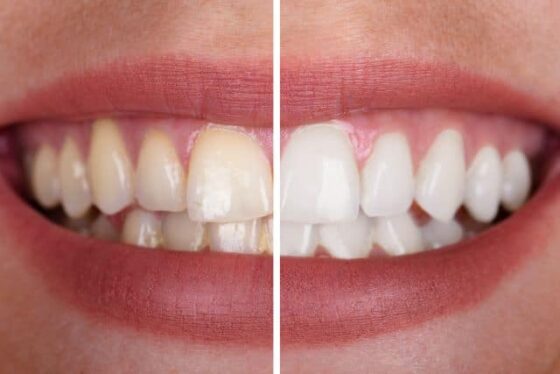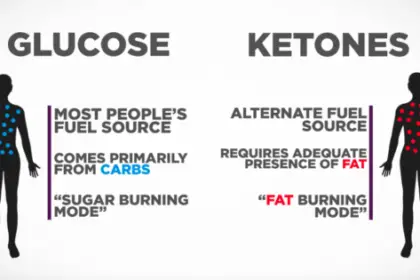Maintaining oral hygiene is crucial for a healthy smile, and many people prefer to use natural toothpaste without artificial ingredients. In this article, we’ll explore two simple recipes: one with baking soda for whitening, and another without baking soda for daily maintenance. Baking soda can be abrasive when used daily, so the second recipe provides a gentle alternative. Let’s dive into the recipes!
Today we’ll be sharing two recipes with you that you can make from the comfort of your own home. The first recipe can be used for whitening but is not advised to be used daily as baking soda is quite gritty and you do not want this scraping your enamel each day.
The second recipe however is more of an evergreen natural toothpaste recipe that you can use daily if you’d like. This will help you save a lot of money on pricey natural toothpaste products over the coming years. Enjoy!
Recipe 1: Baking Soda Whitening Toothpaste
Ingredients:
- 4 tablespoons baking soda
- 2 tablespoons hydrogen peroxide
- 2 teaspoons water
- 10 drops peppermint essential oil (optional for flavor)
Instructions:
- In a small bowl, combine the baking soda, hydrogen peroxide, and water.
- Stir the mixture thoroughly until it forms a smooth paste.
- Add the peppermint essential oil if desired, and mix well.
- Transfer the toothpaste into an airtight container for storage.
Usage:
- Wet your toothbrush and scoop a small amount of the toothpaste onto it.
- Brush your teeth gently in circular motions for approximately two minutes.
- Rinse your mouth thoroughly with water.
- Use this whitening toothpaste only once or twice a week to prevent excessive abrasion to your teeth.
Recipe 2: Coconut Oil Daily Maintenance Toothpaste
Ingredients:
- 4 tablespoons coconut oil
- 2 tablespoons calcium carbonate powder
- 10 drops peppermint essential oil (optional for flavor)
Instructions:
- Place the coconut oil in a microwave-safe bowl and heat it for a few seconds until it melts.
- Add the calcium carbonate powder and mix well until you achieve a smooth consistency.
- If desired, add the peppermint essential oil and stir thoroughly.
- Transfer the toothpaste into a clean, airtight container for storage.
Usage:
- Scoop a small amount of the toothpaste onto your toothbrush.
- Gently brush your teeth in circular motions for about two minutes.
- Spit out the mixture, but avoid rinsing your mouth immediately to allow the beneficial properties of coconut oil to remain on your teeth and gums.
- Rinse your mouth with water after approximately 5 minutes.
Conclusion: Creating your own natural toothpaste allows you to customize your oral care routine with ingredients you trust. While the baking soda whitening toothpaste can be used occasionally, the coconut oil daily maintenance toothpaste offers a gentle and effective alternative without the use of baking soda. Remember to consult your dentist for personalized advice on oral care, especially if you have specific dental concerns.
Maintaining good oral hygiene is vital for a healthy and bright smile. These homemade toothpaste recipes provide natural options for your dental care routine. Enjoy the benefits of these DIY toothpaste alternatives and embrace the power of natural ingredients for a healthier and brighter smile!
Two Effective Teeth & Gum Health Practices:
When it comes to maintaining optimal oral health, natural remedies can play a valuable role. Two such remedies that have gained popularity are cloves and oil pulling. Both cloves and oil pulling offer unique benefits for teeth and gum health, providing a natural and holistic approach to oral care. Let’s explore how these two practices can contribute to a healthy smile.
Cloves for Oral Health: Cloves, derived from the dried flower buds of the Syzygium aromaticum tree, have a long history of traditional use in dental care. They contain a compound called eugenol, which exhibits powerful antimicrobial, anti-inflammatory, and analgesic properties. Here’s how cloves can benefit teeth and gums:
- Natural pain relief: Cloves have been used for centuries to alleviate toothaches and oral discomfort. Eugenol acts as a natural anesthetic, providing temporary relief from tooth pain when applied topically to the affected area.
- Antimicrobial action: The antibacterial properties of cloves help combat oral bacteria, including those responsible for tooth decay and gum disease. Regular use of cloves or clove oil may help reduce the risk of developing these oral health issues.
- Anti-inflammatory properties: Cloves possess anti-inflammatory properties that can help reduce gum inflammation and swelling. This can be particularly beneficial for individuals with gingivitis or other gum-related problems.
Oil Pulling for Oral Health: Oil pulling is an ancient Ayurvedic practice that involves swishing oil in the mouth for 10 to 20 minutes. This technique is believed to promote oral detoxification and improve overall dental health. While various oils can be used for oil pulling, coconut oil is commonly recommended. Here are the benefits of oil pulling:
- Reduction of harmful bacteria: Oil pulling helps eliminate harmful bacteria from the mouth, including Streptococcus mutans, which is a major contributor to tooth decay. By swishing oil in the mouth, the bacteria adhere to the oil and are removed during the spitting-out process.
- Plaque and tartar control: Oil pulling can help reduce plaque accumulation and prevent the formation of tartar. Regular oil pulling may contribute to a cleaner mouth and a reduction in the risk of gum disease and cavities.
- Fresher breath: Bad breath often results from the presence of bacteria in the mouth. Oil pulling can help remove these bacteria and freshen breath, providing a more pleasant oral environment.
It’s important to note that while cloves and oil pulling can offer oral health benefits, they should not replace regular brushing, flossing, and professional dental care. These natural remedies can be used as complementary practices to support overall oral hygiene.
To incorporate cloves into your oral care routine, you can use clove essential oil by diluting it with a carrier oil and applying it to the affected area or making a homemade mouth rinse. For oil pulling, swish a tablespoon of coconut oil in your mouth for the recommended duration and then spit it out, followed by brushing and rinsing with water.
While cloves and oil pulling can be beneficial, it’s essential to consult with your dentist or oral healthcare provider before making any significant changes to your oral care routine. They can provide personalized advice based on your specific dental needs and guide you on how to best integrate these natural practices into your oral hygiene regimen.
Incorporating cloves and oil pulling into your oral care routine can be a natural and holistic way to support teeth and gum health. With their antimicrobial, anti-inflammatory, and cleansing properties, cloves and oil pulling offer a natural ally in the pursuit of a healthy and confident smile.
Recommended Reading:
The Big 3 Mistakes Most People Make With Dental Health And How To Fix Tooth & Gum Issues
How To Avoid The Dentist And Have Perfect Teeth For Over 15 Years – True Story
Recommended Product: Boku Smile Bites (Click To Visit)
Use the discount code: HealthyWildFree for 10% off your order.





